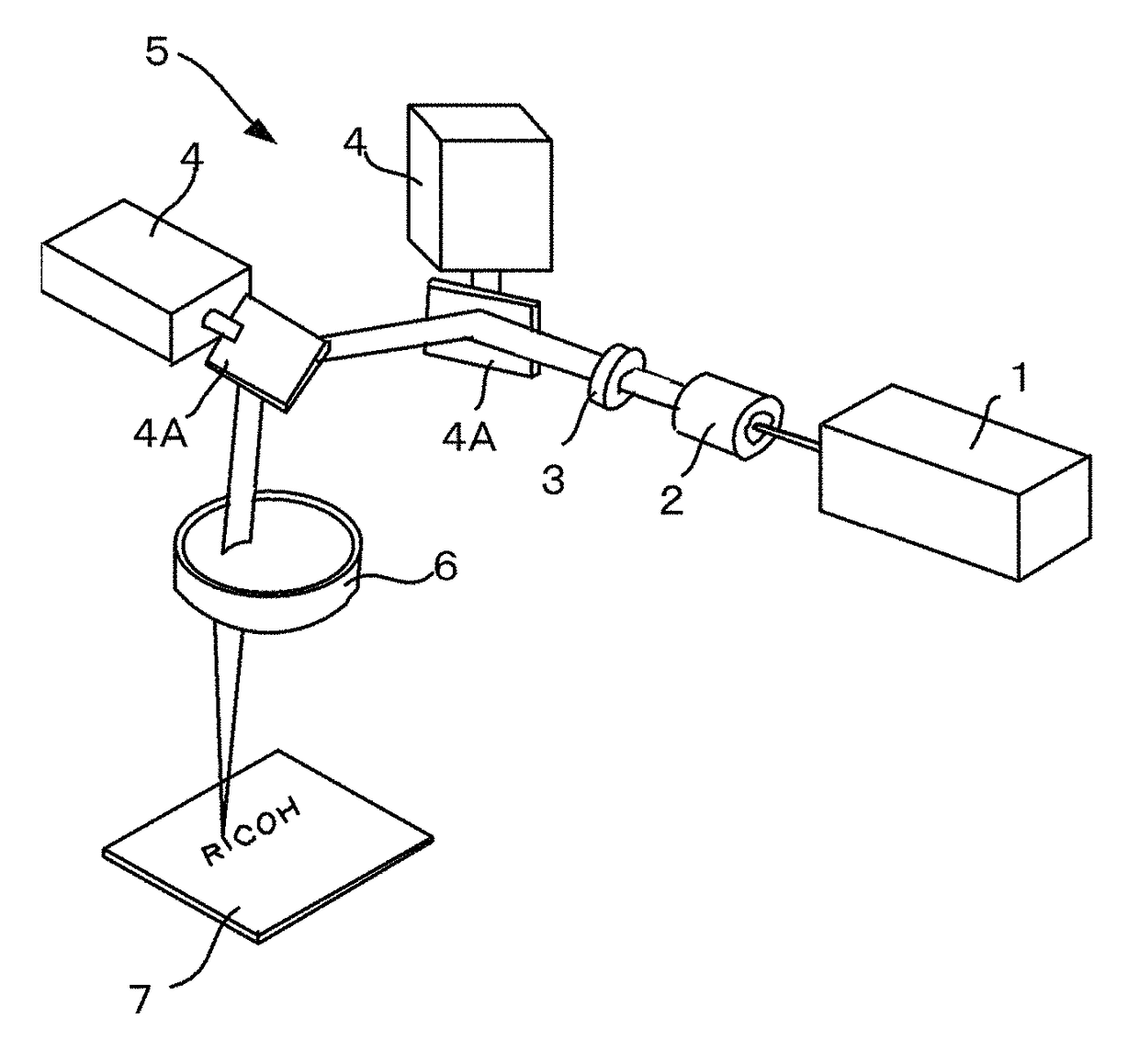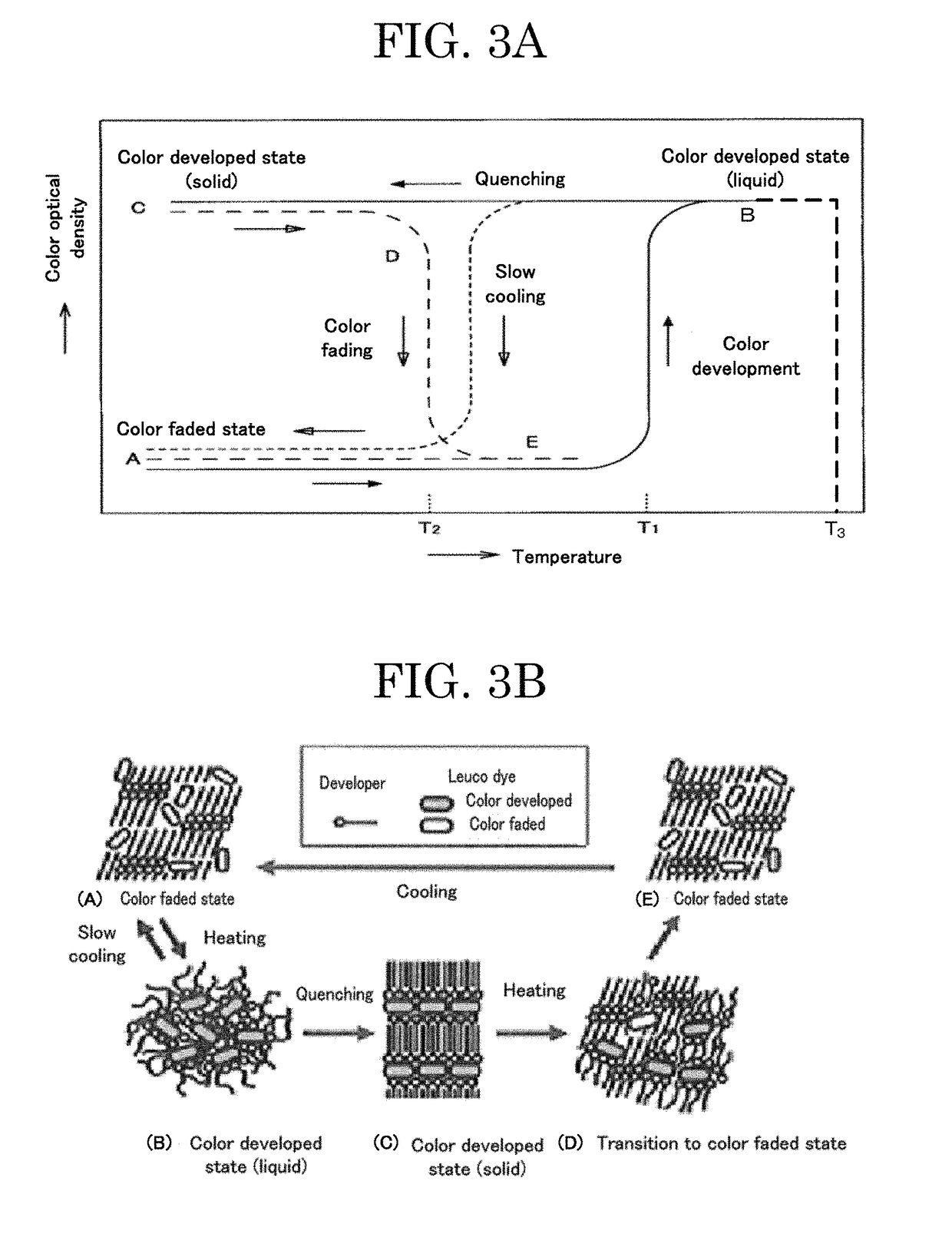Image processing method and image processing apparatus
a technology of image processing and image erasure, which is applied in the field of image processing method and image processing apparatus, can solve the problems of increasing the cost of the apparatus, the lens system controlling the diameter of the irradiation spot, and the time required for image recording and image erasure is long, so as to reduce the time taken, save space, and high-speed image rewriting
- Summary
- Abstract
- Description
- Claims
- Application Information
AI Technical Summary
Benefits of technology
Problems solved by technology
Method used
Image
Examples
manufacture example 1
Manufacture of Thermally Reversible Recording Medium
[0264]A thermally reversible recording medium of which color tone changes reversibly due to heat was manufactured according to the method described below.
—Support Member—
[0265]A white polyester film (TETORON (Registered Trademark) FILM U2L98W manufactured by Teijin DuPont Films Japan Limited) having an average thickness of 125 μm was prepared as the support member.
—Formation of First Oxygen Barrier Layer—
[0266]A urethane-based adhesive (TM-567 manufactured by Toyo-Morton, Ltd.) (5 parts by mass), isocyanate (CAT-RT-37 manufactured by Toyo-Morton, Ltd.) (0.5 parts by mass), and ethyl acetate (5 parts by mass) were stirred well to thereby prepare an oxygen barrier layer coating liquid.
[0267]Next, a silica-vapor-deposited PET film (TECHBARRIER HX manufactured by Mitsubishi Plastics, Inc., oxygen permeability: 0.5 mL / m2 / day / Mpa) was coated with the oxygen barrier layer coating liquid with a wire bar, and heated and dried at 80° C. for ...
example 1
[0279]The thermally reversible recording medium of Manufacture Example 1 was used, and as shown in FIG. 1, an optical system was formed by arranging a fiber-coupled LD (laser diode) light source (PLD 60 manufactured by IPG Photonics Corporation, central wavelength: 974 nm, maximum power output: 60 W) as the laser light source 11, arranging the collimator lens 12b immediately after the fiber for collimating the beam to parallel light, and arranging the focal length control unit 16 and the condensing lens 18. After this, image processing was performed with a LD marker apparatus that was configured to irradiate the thermally reversible recording medium with laser light by scanning the laser light with a galvano scanner 6230H manufactured by Cambridge Inc.
[0280]The thermally reversible recording medium was fixed with the LD marker apparatus such that the work distance from the surface of the optical head to the thermally reversible recording medium would be 150 mm, and the beam diameter...
example 2
[0289]Image recording was performed under the same conditions as Example 1, except that the medium position was set at the work distance of 147 mm unlike Example 1, and barcode grade valuation was performed. The results are shown in Tables 1.
PUM
 Login to View More
Login to View More Abstract
Description
Claims
Application Information
 Login to View More
Login to View More - R&D
- Intellectual Property
- Life Sciences
- Materials
- Tech Scout
- Unparalleled Data Quality
- Higher Quality Content
- 60% Fewer Hallucinations
Browse by: Latest US Patents, China's latest patents, Technical Efficacy Thesaurus, Application Domain, Technology Topic, Popular Technical Reports.
© 2025 PatSnap. All rights reserved.Legal|Privacy policy|Modern Slavery Act Transparency Statement|Sitemap|About US| Contact US: help@patsnap.com



